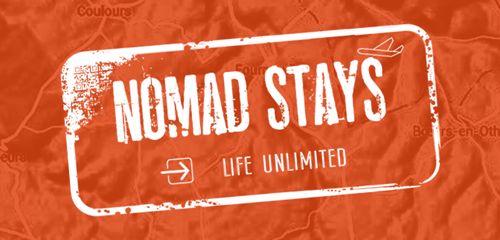How Much Business Can You Generate from Digital Nomads?
With so much hype around digital nomads the past few years the question about how much business they are worth to your Stay is a good one to ask.
So, let’s start by firstly, digging in some statistics about the digital nomad market. Then we will look at what they are seeking, your competitiveness and then, how much it might be worth to you.
Let’s start with some numbers to set the scene.
Overall Statistics – 50m digital nomads in 2024?
It is estimated that the digital nomad population has grown from about 3m people in 2019 to around 50m in 2024. Quite a big growth – actually one of the largest market growths in travel history.
Like most tourism markets this group of digital nomads can be split into domestic and international travelers. Each market having its own different desires.
Domestic Nomads = one market
In large, technology advanced countries like the US you can expect a fairly large domestic digital nomad community. Domestic meaning US residents that stay within the bounds of the US for their digital nomad travels.
Maybe their employers don’t allow them to leave the US (many government jobs have this restriction), or maybe they are more comfortable in the US, or even have a desire to explore their own country before venturing overseas.
International Nomads = a different market
The other group of digital nomads are those that head off to foreign lands for various reasons.
These international nomads are probably the larger group although there are no real stats to prove that. It’s just our impression from dealing with so many nomads.
So, why don’t we make a guess that about 35m of the 50m digital nomads out there are international nomads.
Guestimate: 35m international visitors are digital nomads
2 – 8% of international travelers
35m sounds like a big number but did you know that there were 1.3bn international arrivals in 2023 around the world?
Mainly these stats are counted by the UN and WTO based on airline and train numbers for international arrivals. So probably miss a lot of say EU wide travels that cross borders in cars without any border checks.
At 35m out of 1.3bn digital nomads come out at 2.7% of international travelers.
2.7% doesn’t sound like much though. Personally, I think its larger as some of the 1.3bn are DNs that have crossed several borders each year and so are repeat travelers in that big 1.3bn number.
If we took an average of 3 countries flown into each by the average DN then we start getting to digital nomads being around 8.1% of international travelers. A pretty health number but still under 10% of all international traffic.
Demand does vary throughout the year in most locations. As you know we classify this as peak, shoulder and off-peak seasons,
Your local tourism association or government office might be able to tell you how many overall tourists are arriving in your off-peak seasons. Making an estimate of digital nomad numbers based on the annual averages of 2-8% should give you a feeling as to how many nomads might be walking around your town in off peak months.
What determines where digital nomads go?
Domestic nomads by the fact that they’ve been exposed to a lot of domestic news, information and marketing over a number of years have much greater understanding of the range of offerings their own country has to offer.
Their depth of knowledge gives them an advantage in choosing both known and relatively unknown destinations.
Especially if they have strong preferences for pursuing their hobbies, sports and passions. As they pursue this ‘sporting’ or ‘cultural’ lifestyle they are likely to go where other sportspeople are, or competitions are held, or the weather is good at certain times of year.
Others might pursue business interests more so flit between bigger cities with vibrant business communities.
Where do international digital nomads go?
With less knowledge than their domestic DN cousins the international digital nomad is more likely to visit cities and locations with strong international tourism brands, or well-known digital nomad communities.
A simple example. I am a resident of France that migrated from Australia I’m not based in Paris – one of the top 10 international cities in the world with 37m visitors a year. I’m actually near Chambéry in the French Alps.
You may not have even heard of Chambéry but the business park our accelerator is based in has 20,000 high tech people a day using its precinct. It is the second largest business region in France and home to the world’s largest community of alternative energy specialists and engineers.
So, if you’re a traveltech startup digital nomad or solar energy entrepreneur nomad for instance you’d head to Chambéry over Paris any day for the specialist community in this field of interest.
As digital nomads are working and building careers these sorts of niche locations start attracting their fair share of longer staying guests.
Digital nomads don’t tend to make rash decisions based on scarcity as leisure tourists can. They will soak up knowledge from a range of sources before choosing their preferred destinations. Sources like:
- online guide books,
- social media stories from a range of marketers,
- other digital nomads
- Online forums
- Messaging groups (WhatsApp, Telegram, Viber etc.)
- Blogs
- Promotions
- OTAs like Nomad Stays
The key to recognize here is that they spend more time online than average people and are more considered in their travels as they have more flexibility.
What about digital nomad migrations and routes?
Yes, the digital nomad global migration along known routes is still active, although much less than it was pre-covid. You may have heard of the big nomad communities in places like Bali, Chiang Mai, Morocco, Tulum, Bansko, Tarifa and others.
These routes are their timings often triggered by a combination of weather preferences, and the nomad communities in those towns. Warmer winters, surfing seasons, snow for skiing, seasonal winds for kite surfers etc.
A few of the traditional routes are also being upset by new government rules. Indonesia’s crack down on digital nomads working without visa is well known. Thailand’s increased focus on border-runs each month where the standard visa is only 30 days, and Bulgaria’s joining of the Schengen zone removed its status as a 3 month breathing space inside Europe for non-Europeans on a typical tourism Schengen visa.
How are digital nomad visa’s changing things?
Since covid around 60 countries have now introduced new visa categories that are generically known as ‘digital nomad’ visas although most of them are not useful to many nomads.
It’s fair to say that a few of the countries that rolled out a digital nomad visa did particularly well. Madeira, Barbados and Spain come to mind. But it’s a sad fact that most of the DN visas aren’t that well designed for digital nomads and are failing to be an attractor for digital nomads. Legal requirements, income requirements costs, and administration time and costs of many countries DN visas make them detractors more than attractors.
We’ve noticed the biggest user of DN visa are those ’employees’ whose bosses want them to be legal when they travel. The ‘permanent establishment’ risk for an employer with senior employees in foreign countries is pretty high so they set strong rules for the staff to follow and still be able to remote work.
A more traditional digital nomad is a self-employed person. Maybe a freelancer, a marketer, or a small businessperson with their own company. These self-employed people tend to use traditional tourist visas which permit a limited range of business activities to facilitate international trade.
Community engagement is particularly attractive for digital nomads
Full time solo travel can be a lonely business as many new digital nomads have discovered these past few years.
The attractiveness of destinations with developing digital nomad communities and facilities like coworking spaces has become a strong attractor for larger digital nomad numbers.
The Portuguese Algarve and Tirana are 2 examples of areas going through such growth presently through strong communities.
Now, many Stay owners don’t have the luxury of strong promotion by their governments so have to generate their own attractors. Setting up your own coworking space, or partnering with emerging coworking spaces is still a great way to show you’re really supporting digital nomads.
What about my own Stay’s features?
Like most successful tourism regions around the world, branding and promotion by governments & DMOs have big impacts on the overall numbers coming to your region.
While this is good for your region it might not help your Stay itself. You still need to stand out from the crowd to attract an increasing amount of business.
Setting up superior facilities for digital nomads, and communicating those features, can make a big difference as to which Stay they choose. Given the choice between a Stay that has normal facilities or a slightly higher priced Stay with good DN facilities does help you attract the digital nomad client.
Which would you choose knowing you had 4+ hours of work to do each day?
| Normal Stay | Digital Nomad Stay | |
| Wi-Fi speed | unknown | 100Mbps |
| Work Chairs | Kitchen stools | Padded office chairs on rollers |
| External Computer Monitor | No | Yes |
| Kitchen with cooking utensils | Yes | Yes |
| Swimming Pool | Yes | No |
| Outdoor workspace | No | Yes |
| Washing Machine | Yes | Yes |
| Close to Supermarket | Unknown | Walking Distance |
| Rooms on Property | 1-4 | 4-10 |
| Weekly BBQ for guests | Unknown | Yes |
| Weekly price | €200 | €300 |
What about my price?
Yes, price plays a lot in the decision point for many digital nomads but that doesn’t mean being the cheapest.
Value for Money is the key here.
As full-time travelers Digital Nomads tend to have stronger knowledge on typical prices for things like furnished apartment rentals in a country or region. They will often have a price, or budget in mind and spend time finding Stays that suit their budget.
While DNs do splurge on ‘holidays’ in the year like tourists the majority of their purchases throughout a year will fall within their budgets. Most will avoid expensive areas at peak times of year when tourists are flocking into the region but that doesn’t mean you should stop marketing to DNs in peak seasons. Even if your prices are higher for peak season there are still richer nomads out there that want peak season experiences.
The wide choice and mobility of nomads means they can ‘shop around’ a lot more than tourists. Shopping around means they can choose countries and regions based on good value for money deals to go there. This also involves the cost of flights, trains, buses and other transport options in the overall visit.
It is also worth remembering that overall, there are more bed nights available in the world than clients. But averages are deceptive.
At certain times of the year when everyone is clamoring for a scare resource, such as beachside in Europe over summer, then prices rise. When there is no scarcity though, at off peak times, prices tend to drop.
It doesn’t make a lot of sense to expect peak period prices throughout the year when competitors are dropping their prices. The key here is to distance yourself from your competitors with a better product or a new market, like digital nomads.
Is your messaging clear and consistent?
With so much choice available to DNs they have the luxury of being able to choose the best places they travel to for their own interests.
But does your region make it onto their short list?
Do you and your region have a strong attraction message? Is that message underpinning all your marketing? Are you putting your best foot forward all the time? Are you seen as being trustworthy for this market?
Let me use another example
I first visited Bulgaria and Bansko in 2014. I liked the region for its big mountains and large national parks. The town of Bansko, which had a population of around 12,000 itself wasn’t anything to write home about. The roads were pretty bad and there was nothing really in town to warrant a second look.
Yet by 2019 Bansko was the top digital nomad hangout in Europe with a permanent nomad population of several hundred. More popular than the larger capital Sofia for instance.
Bansko had a wonderful ski life from the center of town and amazingly cheap winter ski pass prices. There were at least 3 coworking spaces in town by 2019 with high-speed internet (100Mbps+), and around 7 coworking spaces by 2022. Apartments were super cheap to rent at around €200 a month. The town held regular tourist and nomad events including a festival, Bansko Nomad Fest, just for digital nomads.
Bulgaria (at the time) has some great business, tax, and travel opportunities for entrepreneurs too. A low tax rate combined with a low cost of living attracted many fledgling businesspeople. The lack of Schengen visa restrictions meant non-European visitors could stay in Bulgaria and reset their Schengen time. It was easy to set a business in Bulgaria and save money living in Bansko. All highly attractive to digital nomads.
All these pro-business, pro-digital nomad, cheap-snow skiing messages helped Bansko create a strong brand and good business from digital nomads. Many nomads, including me, spent many months in Bansko soaking up the great nomad vibe and services while building our careers and businesses.
Is your town doing the same? Is there someone in your region pushing for digital nomad business that you could partner with? Are you putting yourself on the digital nomad map?
But what about bookings?
If you’ve been in travel for a while you’ve probably had a lot of experience with tourists who stop for a few days and then move on.
Stats from big tourist platforms like Airbnb and Booking.com show their average booking is a little over 3 nights.
Nomad Stays doesn’t play in the tourist market. We are 100% focused on digital nomads. And our average booking comes out usually between 25 and 35 nights. A whopping 10 times the average tourist platform booking.
This is what you’ve got to look forward to with digital nomads. Much longer bookings, and the corresponding much larger booking values.
While DNs might be less than 10% of the market they are a really lucrative market if you can attract them.
So, what else do I need to attract DN’s?
Consistency & Triggers are the last elements to talk about.
Are you always open. Always there to book? Are nomads seeing your name and branding consistently? Are you easy to booking on trusted platforms like Nomad Stays?
You’ll want to have your marketing operating 12 months a year to attract nomads because even as they are soaking up the sun somewhere warm in winter they are researching and planning their next range of countries, events and travels.
If they are constantly seeing your messages and branding they will naturally remember you when some trigger event occurs to put your country or region on the planning map. By constantly pushing out strong pro-nomad messages & facilities you’ll begin standing out from the tourist properties that also get chosen when no value-for-money digital nomad Stays can be booked.
And what are your Trigger events? What is happening to cause nomads to choose you at a particular time of year? What is your Bansko Nomad Fest equivalent?
Whether it’s the digital nomad market or the leisure tourism market the question is the same for Stays always… what is the attractor?
OK, so how much revenue is there?
If you look around the Nomad Stays site, you’ll see a wide range of prices for different Stays in different countries.
Not surprisingly it’s a bit difficult to work out from the outside what is selling and what isn’t.
We do find cheaper properties in each market tend to sell better if the Stay has good facilities for digital nomads. Cheap without facilities doesn’t really work with our market though.
We also find that some expensive properties work well in selected markets. Not all digital nomads are budget conscious but a good property in a good nomad region can attract premium prices.
Throughout regional Europe the average price in 2023 paid for an average apartment or Stay, was around €900 a month. This ranges from say €200 a month in places like Albania, or €400 in Bulgaria, to some regional French Stays at €1,200 a month.
I caution you – it does vary a lot by region and time of year. Regions that are internationally unknown can struggle with attracting foreign visitors until they create a great package and brand for a longer stay. Regions with lots of availability in off seasons can find price competition keeps prices low.
On the other hand, regions or Stays with lots of events for nomads tend to attract nomads all year.
Major cities or popular destinations have the same issues but as brand recognition and demand tends to be higher, so too do longer term rental rates. While the cost of living is often higher in major cities, so too is the competition factor with more alternatives but rates do tend to me higher in major cities.
Can You Give Me an Example?
Scenario
For this exercise let’s run with the scenario of a regional European apartment in a decent sized, pleasant town on the beach.
The apartment has a full kitchen, 100Mbps Wi-Fi, washing machine and an office alcove with comfortable chairs. The owner installed a large computer monitor, and Bluetooth keyboard on the office desk where nomads can plug their laptops into.
This town might have long term rentals available for residents at around €600 a month without furniture after agency fees. Long term unfurnished rentals setting an annual income level of around €7,200.
If furnished, in summer they can get €100 a night for short term tourist rentals for about 3 months, and €75 a night for 1 more month. So, a peak and shoulder season, total of 4 months.
The rest of the year there is only a few tourists around who pay maybe €50 a night but bookings are only a few nights a month, and the leisure platforms take another 20% from this for their commissions too. Maybe they bank €80 a month from the STR market for the 8 off season months.
Entering the digital nomad market
Now this Stay decides to go into the digital nomad market because there’s some great kite-surfing beaches with good wind through the year, and they’ve seen digital nomads around town. Their Stay is walking distance from a kiting beach. They list their Stay for €900 a month for digital nomads with the goal of gaining more than €80 a month for the low season.
With their superior screen, office chairs and good Wi-Fi they have better facilities than most tourist apartments so become a preferred Stay in that town. Digital nomads are happy to pay the €900 a month for such a property,
The Stay manages to rent the property for 5 months of the year so banks around €4,000 extra (after booking fees) versus the €400 they were getting from the tourist market previously.
If the Stay owner also lists a summer price at around €2,500 a month and manages to attract a digital nomad for 1 month in summer, then they’ve banked roughly the same as the short-term tourist market and doesn’t have as much cleaning or servicing costs, or empty days between guests.
Nice Outcome
Overall, this is a nice business outcome from a very little investment to upgrade the property for digital nomads.
If the Stay had 20 rooms like this then an extra €80,000 a year starts becoming particularly attractive. Nomad Stays has a nice yield calculator to help you work out some ideal prices.
OVERALL, the digital nomad market is a great complimentary market to leisure
I hope by now you can see how you can determine how many digital nomads might be visiting your region at different times of the year. And how you can become a preferred choice for nomads throughout the year, as well as how to work out a competitive price for your nomad stay.
If you’re already in the tourism industry, then digital nomads might give you a nice boost to your finances. If you’re evaluating a new investment, then hopefully you’ve got a framework for making your investment decisions.






